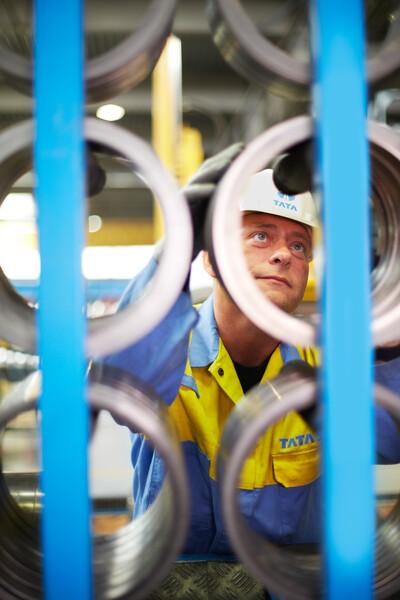In previous blogs I have described the drivers for a focus on sustainability in the Automotive value chain and the specific challenges that these bring for steel. In this blog I want to discuss measurement and reporting of carbon performance.
A change of focus in measuring automotive carbon performance
As I have mentioned in previous blogs, legislation has been for some years and is still focused on tailpipe (use phase) emissions as a key indicator of performance improvement in the automotive sector. This has driven improvements in drive train efficiency as well as light-weighting of vehicles.
As we move into an era of electrification, where there are no longer any tail-pipe emissions and the total use phase emissions are significantly reduced (depending on a low carbon electricity grid mix), the focus has not surprisingly turned to the embodied carbon of the constituent materials used to manufacture vehicles. And this has been an industry-led shift, albeit aligned to future legislative targets for achieving carbon-neutrality.
Describing the carbon performance of materials
Using the example of steel, embodied carbon describes all of the CO2 emitted in every process from the mining of iron ore to the delivery of products to customers. In other words, the embodied carbon describes the cumulative CO2 emissions of all of the production steps - the mining of iron ore and coal, the extraction of iron from its ore, steel-making, rolling and coating up to the point it is delivered to our customers. As I will explain later however, I believe it must also include end of life if it is to be used to compare materials on a like for like basis.
The embodied carbon of a vehicle is then of course the total embodied carbon of all of the constituent materials, taking account of all the resources used in - and the associated emissions from – the production of those constituent materials. A key point to note is that if there is a poor level of material utilisation (sometimes described as yield) during parts manufacture, the carbon penalty is especially detrimental if the material from which the part is made has high embodied carbon.
Comparing the carbon performance of materials
Since a significant fraction of the weight of a vehicle is made from steel, (Fig. 1 left), it is not surprising that vehicle manufacturers focus on the contribution of steel to the overall embodied carbon of a vehicle. However, steel has relatively low embodied carbon in comparison to other materials (Fig. 1, centre) and the recycling rate at end of life is >97% for automotive steels. If the recycling rate of steel is used to calculate an end of life benefit, the sustainability of steel is directly accounted for in the embodied carbon calculation and the carbon footprint of a vehicle is truly reflected (Fig. 1, right).
Figure 1: The impact of steel on the carbon footprint of an ICE vehicle (Calculations based on ICE-G compact, worldsteel)
If recyclability and - even more importantly - recycling rate (terms explained more in my previous blog) are not fully taken into account when assessing the embodied carbon of a material, not only does it unfairly compare one material to another, but it over-estimates the embodied carbon of the vehicle. This does not promote sustainable material choices since materials that are difficult to recycle or with low recycling rate are not discouraged.
Through electrification, and the phasing out of the internal combustion engine, the material mix of a vehicle changes quite significantly, (Fig. 2, left). Most notably, batteries become a much greater proportion of the total vehicle weight (20%). Batteries are generally comprised of high embodied carbon materials and recycling at end of life is an issue. In this case it is clear that batteries can have a disproportionately large impact on the overall embodied carbon of a vehicle (Fig. 2, right) which is why (amongst other factors) battery recycling is such a key area of focus.
Figure 2: The impact of steel on the carbon footprint of a BEV vehicle (Calculations based on BEV FSV C-class, worldsteel)
Disclosure of carbon performance
Many companies have started to disclose their carbon performance semi publicly via platforms such as CDP Worldwide and/or openly in their own sustainability reports. Tata Steel has long been supporting its customers in this respect and has been disclosing its carbon performance via CDP for around 14 years.
Increasingly we are seeing our customers request that more of their suppliers disclose carbon performance. As relatively old hands, what is clear within Tata Steel at least, is that each year the process becomes easier, coverage of our operations improves and we are better able to report actual measured data. This helps us target improvements internally and allows us to better support our customers.
The need for a joined up supply chain approach
Carbon emissions are often described in terms of 3 ‘scopes’.
- Scope 1 covers direct emissions from the organisation’s own production processes
- Scope 2, the indirect emissions from purchased energy e.g. electricity
- Scope 3 describes the indirect emissions (not included in Scope 2) that are associated with the organisation’s value chain. e.g. purchased materials.
In order to report embodied carbon performance, vehicle manufacturers need data for the whole supply chain. A start can be made using average data for industry sectors but data quality improves as more suppliers contribute actual data and the quality of their data improves. This is why our team of experts is continuously improving mapping of Scope 1, 2 and 3 emissions so that we can provide the best possible data to supply chain partners and work on joint projects to improve.
Wherever we sit within the automotive value chain, which I take to also include end of life, I think we all recognise that the embodied carbon of vehicles is dependent on the carbon performance through the entire life cycle, so it is clear that we need to work together through chain to achieve robust data on embodied carbon so that the desired reductions in embodied carbon can be effectively targeted, achieved, measured and validated.
In future blogs, I will come back to the subject of carbon performance data.
>> Return to the main Automotive blogs page














































































































































































